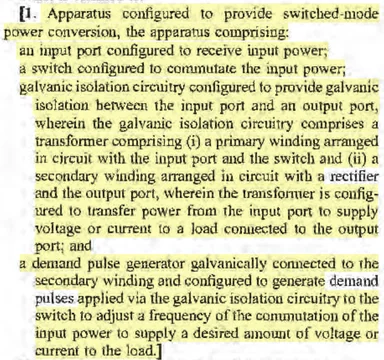
Our blog readership remains pretty high these days, and we continue to grow subscribers. But not all District of Delaware attorneys follow the blog—yet.
That may be why, even though we've talked about these at length, parties continue to file separate "concise statements of material fact" in support of their summary judgment motions that list non-material facts and do not include pinpoint citations—potentially resulting in denial of their motion.
Here are some guidelines for when you are putting together a concise statement of material facts in support of an SJ motion:
- Include only the material facts. If you could still win your motion if a fact is disputed, then (in my view) it's not a "material" fact for this purpose. The more facts you list, the more likely you are to lose.
- Include every material fact. The Court has denied a summary judgment motion where it failed to include material facts in its concise statement of material fact.
- Include pinpoint citations for every fact you list. Your listed facts are only as good as their citations.
Keep in mind that a "fact" for this purpose is really more of a factual conclusion.
I try to avoid having multiple separate "facts" for the same point. Sometimes people draft their concise statement like this, which is not optimal:
1. Ms. Smith testified that she was employed by defendant in 2023. Ex. 1 at 2:3-4.
2. Defendant's employment agreement from Ms. Smith is dated 2023. Ex. 2 at 8.
3. Mr. Ford saw Ms. Smith in the office in 2023. Ex. 3 at 2.
None of those facts is actually material to the motion. Worse, if the Court finds any one of the facts to be disputed, the motion may be denied.
Instead, just state the one fact that is actually material, and use the rest as citations for support—something like this:
1. Ms. Smith was employed by defendant in 2023. See Ex. 1 at 2:3-4 (Ms. Smith testifying . . .); Ex. 2 at 8 (employment agreement dated 2023); Ex. 3 at 2 (Ford declaration stating Ms. Smith was in the office in 2023).
That way, if there is an issue with any single one of your cites in support, the motion is still fine as long as there is no issue as to the underlying factual conclusion.
Another SJ Motion Denied Based on Its Concise Statement of Facts
Here is an example from yesterday of how not to do it. In an employment case, the plaintiff had alleged retaliation for reporting protected activity, and the defendant moved for summary judgment on that and other issues.
The question of whether it was protected activity turned on whether a particular individual (referred to below as Ms. W) was an employee at the time. If not, Defendant argued, then summary judgment is appropriate. In support of their motion, the defendant filed a concise statement of facts that included this fact:
25. The second allegation relates to [Ms. W], a former TBH customer. Ex. 11. [Ms. W] was never employed by TBH.
Russell C. Preister v. Tesla Biohealing, Inc., C.A. No. 23-575-CFC, D.I. 43 (D. Del. July 12, 2024).
Right off the bat, there are multiple problems with this "fact":
- It's actually three facts smashed together. The first is the description of the allegation. The second is that Ms. W is a former customer. The third is that Ms. W was never employed by the defendant.
- There are no pinpoint citations for any fact.
- There is no citation whatsoever for the fact that Ms. W was never employed by the defendant.
The plaintiff's response contended that Ms. W was not just a customer, she was also a potential employee—and plaintiff offered multiple pinpoint citations in support:
25. Denied as stated. [Ms. W] also discussed working with TBH to lead account management for the multi-unit wellness centers to grow revenue/sales for TBH. She was a potential employee. (Pla. Ex. C, Tesla-BIO_0082) (Pla. Ex. A. Liu Dep. Page 41, Lines 22-24)
Sure enough, the Court denied the summary judgment motion in its entirety, citing only a dispute about this single fact:
Pending before me is Defendant Tesla Biohealing, Inc.'s Motion for Summary Judgment. D.I. 41. In its concise statement of material undisputed facts filed in support of its motion, Tesla Biohealing describes [Ms. W] as a "former TBH customer." . . . Plaintiff denies this description and states that [Ms. W] "was a potential employee." . . . Plaintiff cites record evidence (i.e., email correspondence) that appears on its face to support his statement that [Ms. W] was not merely a former customer. See D.I. 48 ¶ 25; Pla. Ex. C, Tesla-BIO_0081-82. Because there is a disputed fact that Tesla Biohealing has said is material to its motion, I will deny the motion.
Russell C. Preister v. Tesla Biohealing, Inc., C.A. No. 23-575-CFC, D.I. 53 (D. Del. Sept. 9, 2024).
What Could They Have Done Differently?
Looking at the briefing, the issue was really whether whether the actions against Ms. W were protected at the time. They didn't need to say generally that she was a customer or that she was "never" an employee like they did:
25. The second allegation relates to [Ms. W], a former TBH customer. Ex. 11. [Ms. W] was never employed by TBH.
A better fact for the concise statement would have been something like:
25. From 4/1/2021 to 4/15/2021, Ms. W was only a customer of TBH. See Ex. 11 at 2; Ex. __ at _; . . .
From the briefing, it looks like defendant would not have had anything to say to that—they seemingly agreed that she was a customer during the relevant period. If so, the motion could have proceeded (assuming there aren't other unsupported/overbroad facts).
More broadly, it looks like that fact was not material in isolation. There were multiple grounds for the motion—not just that the activity was not protected, but also a freestanding point that the plaintiff was terminated for non-retaliatory reasons. That point alone could have supported granting the motion.
The defendant here could have broken up their summary judgment motion into multiple motions—or at least given some indication in the concise statement that the fact was only material in the alternative, if the Court found that the plaintiff was not terminated for non-retaliatory reasons.
If you enjoyed this post, consider subscribing to receive free e-mail updates about new posts.




